Digital Asset Management (DAM) Software is a system used to store, organize, manage, and distribute digital assets such as images, videos, documents, and other multimedia content. It provides a centralized repository for assets, making it easier for organizations to collaborate, maintain brand consistency, and streamline workflows. Key Features of Digital Asset Management Software: * Centralized Storage: A single location for all digital assets, making them easily accessible to authorized users. * Metadata Management: Users can add metadata (tags, descriptions, keywords) to assets, facilitating efficient search and retrieval. * Version Control: Keeps track of different versions of assets, allowing users to revert to previous versions or compare changes. * Search and Retrieval: Advanced search functionalities enable users to find assets quickly using filters based on metadata, file types, or usage rights. * User Access Control: Admins can define user roles and permissions, ensuring that sensitive assets are protected and only accessible to authorized personnel. * Collaboration Tools: Features such as commenting, sharing, and approval workflows help teams collaborate effectively on asset creation and management. * Integration Capabilities: Many DAM systems can integrate with other software tools, such as content management systems (CMS), marketing automation platforms, and social media. * Analytics and Reporting: Provides insights into asset usage, helping organizations understand which assets are performing well and how they are being utilized. Benefits of Digital Asset Management Software: * Increased Efficiency: Streamlines workflows by reducing the time spent searching for and managing digital assets. * Enhanced Collaboration: Facilitates teamwork by providing a shared space for asset management and communication. * Brand Consistency: Ensures that all team members use the correct and updated versions of assets, maintaining brand integrity. * Cost Savings: Reduces the risk of duplication and misuse of assets, which can lead to savings in production and licensing costs. * Improved Security: Protects sensitive digital assets through controlled access and secure storage. Use Cases: * Marketing and Advertising: Managing promotional materials, images, and videos for campaigns. * Content Creation: Organizing and storing assets for blogs, websites, and social media. * E-commerce: Handling product images, descriptions, and marketing materials. * Corporate Communications: Storing and distributing company logos, templates, and other brand assets. In summary, Digital Asset Management Software is essential for organizations looking to enhance their digital asset workflows, improve collaboration, and maintain brand consistency across various channels.
Lähetä uusi sovellus

Amplience
amplience.com
Amplience on päättömän CMS- ja DAM-alusta, joka hallinnoi, luo ja toimittaa personoitua digitaalista sisältöä eri kanaviin, tukien kehittäjiä ja markkinoijia.

Crystallize
crystallize.com
Crystallize on API-pohjainen headless-verkkokauppa-alusta, joka hallinnoi tuotteita, tilauksia (ml. toistuvat tilaukset), ostoskoreja ja tarjoaa GraphQL-rajapinnat sekä haun ja tilanhallinnan.

PRShots
prshots.com
PRShots on verkkoarkisto, josta media ja vaikuttajat voivat hakea ja ladata korkearesoluutioisia kuvia, videoita ja lehdistötiedotteita useiden brändien kokoelmasta yhdellä kirjautumisella.

snaatch
snaatch.com
snaatch on saksalainen digitaalinen aineistonhallintajärjestelmä. Arkistoi, järjestä ja jaa mediatiedostot turvallisesti ja GDPR-yhteensopivasti.

Flaunter
flaunter.com
Flaunter on alusta, jossa brändit tallentavat ja järjestävät korkearesoluutioista mediaa (kuvat, videot, tiedostot) ja media etsii, lataa sekä seuraa näytteitä ja sisältöä.
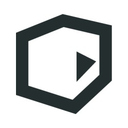
DemoUp Cliplister
demoup-cliplister.com
DemoUp Cliplister on pilvipohjainen järjestelmä digitaalisten tuotevarojen hallintaan ja jakeluun: se tallentaa, järjestää, optimoi ja toimittaa kuvia, videoita ja 3D-materiaaleja jälleenmyyjille.

Capture
capture.co.uk
Capture on visuaalisen median hallintajärjestelmä, joka kokoaa, järjestää ja jakaa digitaalisia aineistoja sekä hallinnoi lisensointia ja jakelukanavia.

FADEL
fadel.com
FADEL on pilvipohjainen ohjelmisto, joka automatisoi sisältö- ja immateriaalioikeuksien, rojaltien ja tuotemerkin noudattamisen hallinnan yrityksille.

BrandMuscle
brandmuscle.com
BrandMuscle on alusta, joka auttaa yrityksiä automatisoimaan ja hallinnoimaan paikallista markkinointia, tukemaan kumppaneita ja varmistamaan sääntöjenmukaisuuden.

IMPGo
impgo.com
IMPGo on digitaalinen aineistojen (DAM), brändin ja sisällönhallinta-alusta, joka yhdistää hallinnan, jakelun ja analytiikan yhteen käyttöliittymään.
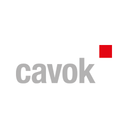
Cavok
cavok.pro
Cavok hallitsee digitaaliset aineistot keskitetysti: jakaa mediasisällöt eri järjestelmissä ja tiimeissä, vähentää päällekkäisyyksiä, automatisoi työnkulkuja ja tarjoaa seurannan.

Ansira
ansira.com
Ansira yhdistää yritysten markkinointi- ja paikallistiedot, hallinnoi verkkosivuja, paikallista näkyvyyttä ja mainontaa sekä tukee yhteistyötä jakeluverkostojen kanssa.
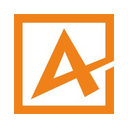
4ALLPORTAL
4allportal.com
4ALLPORTAL on DAM- ja PIM-järjestelmä, joka keskittää, järjestää ja synkronoi digitaaliset tiedostot ja tuotetiedot, tukee työnkulkuja ja integroituu yritysjärjestelmiin.
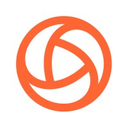
globaledit
globaledit.com
Globaledit on yhtenäinen alusta, joka mahdollistaa visuaalisen sisältötuotannon hallinnan ja tiimiyhteistyön kuvauksesta julkaisuun.

Aprimo
aprimo.com
Aprimo on AI-avusteinen alusta digitaalisten aineistojen hallintaan ja sisältötyön koordinointiin; se hallinnoi metatietoja, työnkulkuja, hakua ja integraatioita.
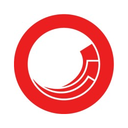
Sitecore
sitecore.com
Sitecore on digitaalisen kokemuksen alusta, joka hallinnoi, personoi ja toimittaa sisältöä sekä yhdistää asiakastiedot eri kanavissa.

OpenAsset
openasset.com
OpenAsset on digitaalisen omaisuudenhallinnan järjestelmä, joka keskittää, tallentaa ja hakee yrityksen kuvat, videot ja PDF:t sekä hallinnoi metatietoja ja jakamisoikeuksia.

KNVEY
knvey.com
KNVEY on kaikki yhdessä digitaalinen alusta verkkosivuille, portaaleille, dokumentti- ja tuotetiedon hallintaan, lomakkeisiin, työnkulkuun ja integraatioihin.
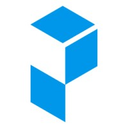
Penzle
penzle.com
Penzle on headless CMS, joka hallinnoi sisältöä API-pohjaisesti, julkaisee sisältöä eri laitteisiin ja kanaviin sekä tarjoaa pilvipalvelun ja ilmaisen itseisännöintivaihtoehdon.
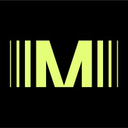
Moments Lab
momentslab.com
Moments Lab tekee videoista haettavia ja indeksoi kohtauksia luonnollisella kielellä, jotta sisällöntuottajat löytävät, hallinnoivat ja leikkaavat avainhetkiä nopeammin.

ClipSource
clipsource.com
ClipSource on mediatoimialalle suunnattu viestintä- ja markkinointialusta, joka tarjoaa turvallisen näytön, trailereiden ja leikkeiden jakelun, lehdistötiedotuksen ja tapahtumien hallinnan.

MarcomCentral
marcom.com
MarcomCentral hallinnoi ja jakaa markkinointimateriaalia, järjestää digitaaliset tiedostot, automatisoi työnkulkuja ja tukee yhteistyötä brändi-, markkinointi- ja myyntitiimeille.
Ratkaisut
© 2025 WebCatalog, Inc.